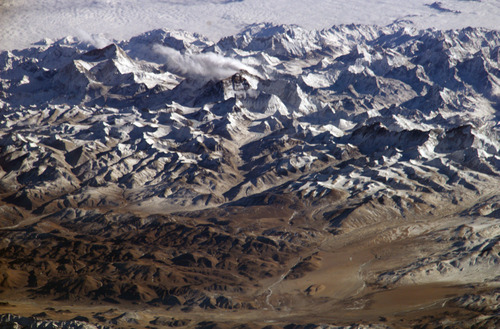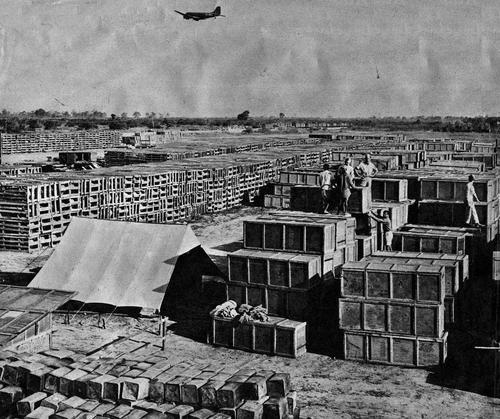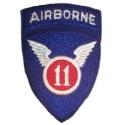Flying The Hump
To honor the men who flew to support the men on the ground….
The first massive airlift in history
One of the chapters in ‘The Java Gold’ is dedicated to ‘…flying the Hump…’as the ‘air bridge’ into China across the Himalayas soon became known. ‘It was the first massive airlift in history.
 The Himalayas as seen after take off from a field in Assam
The Himalayas as seen after take off from a field in Assam
‘The Hump’ started early in 1942, initially with just a handful of aircrew and airplanes. Most of these planes were hastily ‘converted’ civilian DC-3’s that had been ferried across the Atlantic, Africa and India by a Pan American subsidiary. Often the former civilian owner’s logo and lettering couldstill be seen shining through the hastily applied olive drab army paint.
The US 10th Air Force, ATC and CNAC attempted to carry 10.000 tons of cargo each month into the beleaguered Kunming area that was isolated after the loss of the Burma Road.
 Chabua airfield in 1944, with a view of…
Chabua airfield in 1944, with a view of…
View original post 412 more words
Posted on March 18, 2017, in Uncategorized, WWII and tagged aviation, History, Java, Military, Pacific War, The Hump, WW2, WWII. Bookmark the permalink. 36 Comments.







Flying the Hump cost many pilots their lives
LikeLiked by 1 person
They most certainly did at that, but they felt they had a job to do.
LikeLike
GP – thank you for re-blogging this. The Hump was an important but all-too-often overlooked part of the war in the Pacific.
LikeLiked by 1 person
That’s exactly how I feel.
LikeLike
As I wrote on the author’s blog: “Thank you for making us think about those who do the grunt work, the hard work, the work that is often taken for granted. The casualty rate was stunning”
LikeLiked by 1 person
I appreciate you commenting to the original author of this piece – it is a terrific article!
LikeLiked by 2 people
Unsung heroes. I learnt about these men for the first time through, I think, an earlier post by you. Glad to read more.
LikeLiked by 1 person
Yes, I did a post on them a while back, but I thought it should be repeated for the newcomers. So little was known about the CBI – that’s what makes researchers such as yourself so important!!
Thank you for dropping by, Hilary. Always a pleasure!
LikeLike
Hi GP, we visited Kunming in 2008. We reached there via Chongqing where we visited the former residence of General Stillwell which is now the Flying Tigers Museum. I believe that is connected with this operation. Amazing flying skills. In a bizarre re-use, there is an art school at the back, where I purchased an artwork that takes pride of place in my (small) living room. It depicts a Miao woman (Hmong in the north of Vietnam) on her way to her wedding. There is something like 48 ethnic minorities in this part of China, each with their own culture distinct from Han Chinese. Kunming also has a fabulous flower market. A very pretty part of China. So good that these airmen could protect its people.
LikeLiked by 2 people
Thank you very for giving us that view of the world. So little used to be known about that theater during the war, so it is great to know that their culture survived it all!
I appreciate your terrific contribution, Gwen!!
LikeLiked by 3 people
The fact that they couldn’t get ‘quality’ mechanics to go there says a lot! Working at night and terrible conditions, these guys all deserve recognition for what they did.
LikeLiked by 1 person
I fully agree! Robert’s article here has touched a lot of the readers. This are stories we were never taught in school.
LikeLiked by 2 people
Great post and photos!
LikeLiked by 1 person
I think Robert did an excellent job on this information and to honor the men. Thank you for reading it!!
LikeLiked by 1 person
I agree and you are welcome!
LikeLiked by 1 person
That’s total new and unknown to me” the flying hump” thanks for the information
LikeLiked by 1 person
Ik ben erg blij dat je vond het interessant, Mary Lou. Het CBI Theater was niet veel in de oorlog bekend en scholen leren heel weinig over het nu.
LikeLike
Goods share GP! You have a knack for writing history or choosing other great pieces to share. Kinda makes history alive than boring history books. Thanks and have a great Sunday!
LikeLiked by 1 person
I do try. Sometimes I get caught up in the dates, names and statistics like text books do, but that’s when I feel it is time for a personal account or a reblog. Thanks for reading this.
LikeLiked by 1 person
😊My pleasure – easy as it is a good read.
LikeLiked by 1 person
I was fascinated about the massive proportions of the first great air lift and it reminded me most likely of the second air lift, when in 1948 the Soviets cut off all rail and road connections to Berlin with the intent of starving out the city. They did not count on the determination of the US government. At the height of the airlift American transport planes were landing in Berlin every 15 minutes. Imagine to provide supplies for millions of people for almost an entire year. In view of this gigantic effort the Russians eventually gave up and dropped the blockade. Thank you, GP, for reblogging this post!
LikeLiked by 1 person
I’m glad you found it interesting, Peter and that it brought back fond memories of the US after the war.
LikeLiked by 1 person
An almost unbelievable achievement. It’s a very great pity that no campaign medals were ever issued for it.
LikeLiked by 1 person
THAT is astounding, isn’t it?!! So little of that area is known not only to us, but when it was actually transpiring – it was a mystery! I agree fully, John – a great pity!!
LikeLike
I’m kicking myself — I heard an interview on radio the other day when a fellow was talking about his father or uncle, who flew the hump. Now, I don’t remember where I heard it, or exactly when. In any case, it was as interesting as this post. Those men really were something.
LikeLiked by 1 person
They pulled off some astounding feats!! Thank you for reading it, Linda!
LikeLike
Wünsche dir ein schönes Weekend Gruß und Umarmung Gislinde
LikeLike
Danke, Gislinde, Wünsche dir ein schönes Weekend.
LikeLike
Crossing the Himalayas in a civilian aircraft (albeit converted)–daunting.
LikeLiked by 1 person
Their feats of bravery in unknown territory were quite fantastic.
LikeLike
They did a great job, but it is sad that so many lost their lives in the process.
As the article says, they were very much the ‘unsung heroes’ of the Air Force.
Best wishes, Pete.
LikeLiked by 1 person
So true, Pete. All the more reason we hear their story! Thank you for dropping by today. Hope your weekend is going smoothly.
LikeLiked by 1 person
Thanks for sharing this fine tribute to all the brave men on land and above, GP Cox!
Wishing you a wonderful weekend. x
LikeLiked by 1 person
Thank you so much, Dina. I greatly appreciate you coming by for a visit, this article was done so well.
All my best to the family of Fabs!!
LikeLike
Interesting! One often forget that transports are crucial in a war
LikeLiked by 1 person
So much history simply includes the ground combat soldier or pilots and it takes a heck of a lot more to keep those people in the action!! Thanks for stopping in!
LikeLiked by 1 person